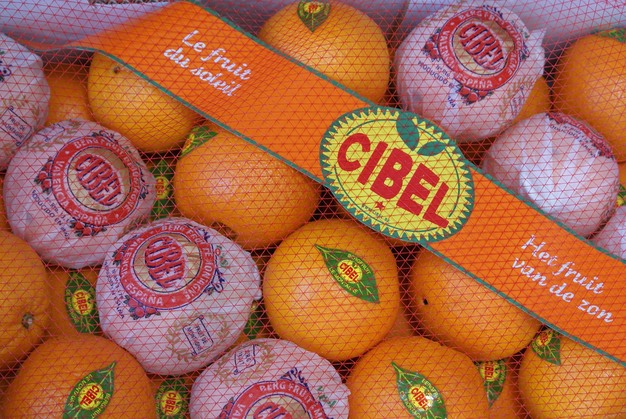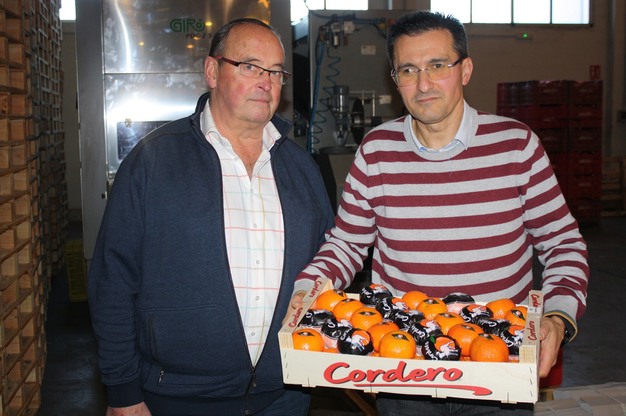"Excellent" is how William Willems of Central Fruit describes the Spanish citrus market in mid-November. Central Fruit is a Belgian fruit and vegetable import and export company. He says demand is good and that there is enough product available. William, though, has a comment about the fruits' size and quality.

"There's ample Spanish product available, but much is of somewhat inferior quality. We face a season with quite a lot of small Clementines and oranges. Exporters find it quite challenging to find the right channels for that. There's little good-quality product," William begins.
Long-standing relationship
Central Fruit can circumnavigate that, though, thanks to its long-standing relationships with Spanish shipping agents. "We've only marketed premium quality under the Cibel brand for years. If you work with established partners and have good results, you find yourself in a good place in the current market."

According to William, there are good Spanish leaf Clementine volumes available, and the transition from the South African season, which was good, to the Spanish one went smoothly. "We like working like this. The market, which had no surplus of South African fruit, was pretty much empty, especially regarding good quality Nadarcotts, Tangolds, and oranges," he says.
Pricing
Willems says the market situation is affecting pricing. "Citrus is more expensive this year, and the good, correctly-sized fruit should fetch higher prices than in other years. If exporters do all that work to provide us with the right caliber and quality citrus, we must guarantee they get well reimbursed." Central Fruit has not seen inflation of high costs adversely impacting consumer demand either. "We've wondered whether we can keep defending the current high prices. To date, though, continuing in the premium segment has proven to be the right choice," says William.

Oranges vs. easy peelers
He notes that classic oranges are increasingly losing out to easy peelers. "People are eating more and more of those, so, year after year, orange sales come under pressure. There's good demand for juicing oranges, but the standard ones are getting somewhat forgotten. Young people and families with children, in particular, buy easy peelers because they're more user-friendly; they're smaller and peel quickly and easily. Then, when good varieties that are also seedless, juicy, and sweet are available, the choice is easy." William doubts that the trend will reverse any time soon. "In Spain and other continents, more is clearly being invested in planting easy peelers rather than oranges," he explains.
Well received
Hans Tabak of Dutch Green, a wholesaler in the Netherlands, also noticed that, in mid-November, the first Spanish citrus was well received. "We started with that in the first week of November, about ten days later than last year," he says, attributing that to the weather in Spain. "Oranges only color when the nights are cold. That took a long time because of the persistent Spanish heat. But they're now nice and sweet and nicely colored. That's a good start."
 Hans Tabak inspect the citrus
Hans Tabak inspect the citrus
Hans finds it vital to deliver good quality citrus marketed under the Cordero brand. That is why Dutch Green enters the market on average two to three weeks later than other suppliers. "We never participate at the start. We wait until the oranges have more color and their sugar content is on par. When that's at its best, we begin. Our customers say they have to occasionally turn people away in the store or at the market for a week or two. If they sell oranges that aren't sweet enough too early, they spoil it for the rest of the season. We think exactly the same way," he explains.

Less volume
Though there is still a bit of a wait for the first juicing oranges - Hans expects these sometime in early December - the market is more than ready for them. "It's completely bare, and we're desperate for Salustianas." The first Clemenules and Clementines have arrived, and the importer says the market has enthusiastically received them. Hans sees that while quality is good, the Spanish citrus volume is 10 to 30% lower than usual. That will probably affect the season's course, he says. "It won't be as long as other years because the weather conditions have decreased the volume in Spain," Hans concludes. That affects pricing, too, which he notes is substantially higher than last year and is expected to remain so during the season.
William Willems
Central Fruit
Werkhuizenkaai 112-154
Mag. 47-48-49
1000 Brussel
+32(0)2242 62 00
[email protected]
www.centralfruit.be
Hans Tabak
Dutch Green
Mob: +31 (0)6 53228976
[email protected]
www.dutchgreen.nl
